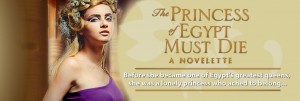I usually shy away from talking about my writing process (except on Facebook or when I’m teaching a class) because it seems self-indulgent. But many thanks to the bright and shiny Christy English for reminding me that readers want to know, and for asking me a few questions about my writing.
1) What am I working on?
 Right now, I’m deeply immersed in the 18th-19th century world of Martha “Patsy” Jefferson Randolph, daughter of the third President of the United States. Together with my co-author Laura Kamoie (aka NYT Bestselling author Laura Kaye), I’m writing about the woman who shaped his legend, and thereby, defined our nation’s legacy. Though it’s a departure from my usual time period, it’s deeply satisfying to be writing about some of my favorite things all at once: important women that history has overlooked, government, and controversial turning points in human history. I post almost daily excerpts and comments on the research I’m doing, so if you’d like to follow along, please do chat me up on Facebook.
Right now, I’m deeply immersed in the 18th-19th century world of Martha “Patsy” Jefferson Randolph, daughter of the third President of the United States. Together with my co-author Laura Kamoie (aka NYT Bestselling author Laura Kaye), I’m writing about the woman who shaped his legend, and thereby, defined our nation’s legacy. Though it’s a departure from my usual time period, it’s deeply satisfying to be writing about some of my favorite things all at once: important women that history has overlooked, government, and controversial turning points in human history. I post almost daily excerpts and comments on the research I’m doing, so if you’d like to follow along, please do chat me up on Facebook.
Of course, I’m also jotting down notes for other projects including a full-length adult treatment of the life of Arsinoe II (to accompany The Princess of Egypt Must Die) and a follow-up to the Nile books that will center on the life of Cleopatra Selene’s children.
2) How does my work differ from others of its genre?
Until recently, I would have said that what distinguishes my work from others in my genre is my inclusion of fantastical and religious elements in my Nile books. But now that I’m moving a bit away from fantasy, I would say that what distinguishes my writing is that it is always intensely emotional, introspective, and dramatic. I don’t write quiet little stories–there are always fireworks of some kind or another because the subjects I choose to write about tend to have very soapy lives!
3) Why do I write what I do?
Understanding history helps us understand who we are now. How we got here. If we’re moving forward or if we’re sliding back into past mistakes. That feels important to me and I love discovering just how very human these historical legends really were.
4) How does your writing process work?
For historical fiction, it always starts with a timeline. I need to understand the big historical beats–what we know, and where there is room for speculation on my part. Because I love filling in the blanks! (To visualize all this, I use Aeon Timeline, then I start mapping out the scenes that have to be in the book using Scrivener.)
I’ve decided to pose the same questions to some other writers including Eliza Knight and Kate Quinn, so check back here on the 24th and I’ll link back to their answers!
Update: Eliza Knight’s post is here. And Kate Quinn’s post is here.



Thanks for giving us a little insight into how you come up with all of these good stories! I’m excited for an expanded story for Arsinoe II and I am beside myself with longing for your Pasty Jefferson book to come out! I can’t wait!
You and me both, Meg. I’ve been so immersed, I’m OBSESSED. No one can be around me without my telling another Jefferson story.
Discovered your work through Eliza Knight. I am looking forward to reading your work. :o)
Oh yay! I love Eliza Knight dearly. (And am looking forward to dinner at her house soon. She’s an amazing cook.)
I have one of your books on my shelf that I haven’t yet got around to reading. Regarding Arsinoe, I saw a TV documentary on her once and they showed she was a child when she was taken to Rome.
I look forward to hearing your thoughts on my book when you read it. The documentary you saw was probably Arsinoe the sister of Cleopatra, whereas I’m writing about Arsinoe II who was the daughter of Ptolemy, so a little different, but enjoyable I hope either way.
May I recommend a new novel it’s called I am Livia by Phyllis T. Smith it’s the only novel I’ve seen that is told from Livia Drusilla’s point of view and I really enjoyed it!
Can’t wait to read it.